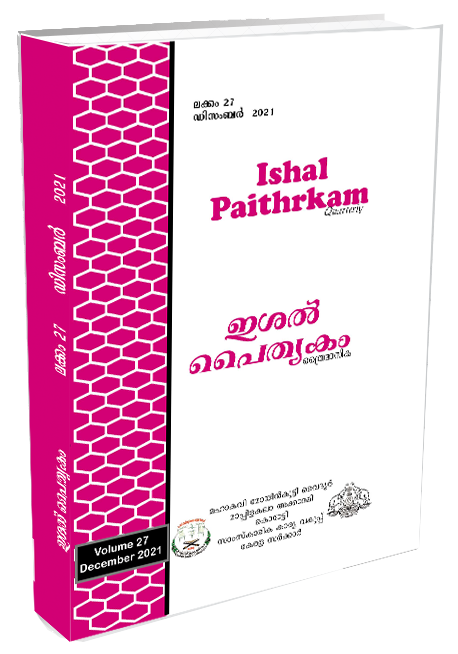Problematic of the Body and Subaltern Visibility in S Hareesh’s Novel Moustache
Keywords:
Dalit Body, Agency, Subaltern Visibility, Ghostly Subjectivity, Spectral PerceptionAbstract
The novel Moustache authored by S Hareesh tells the story of Vavachan, a character belonging to the Pulaya caste in the princely state of Travancore who started wearing an immense moustache after his appearance in a cameo role in a musical drama. The novel is an ethnographic study of the Pulaya people of the mid-Travancore region of Kerala at a crucial juncture of their social transformation. The article attempts to study the pivotal role played by the corporeality of the body in the historical Dalit mobilisation and Dalit resistance and in gaining agency and visibility. The paper studies how Vavachan, a Pulayan, reclaims the autonomy of his body and uses it creatively for contesting caste hierarchies. It further examines how the body of Vavachan has been conceived as the ghostly subjectivity by the spectral perceptual practices of the hierarchical society and how it has been dehumanised by marking as the deviant and criminal body.
Downloads
References
Brooks, Peter. Body Work. Harvard University Press, 1993.
Cortes, Jason. “Wounding Materiality: Oller’s El velurio and the Trauma of Subaltern Visibility”. Revista Hispánica Moderna, Año 65, No. 2, December 2012, pp. 165-180. JSTOR, www.jstor.org/stable/41679833.
Foucault, Michel. The History of Sexuality: Vol 1, An Introduction. Pantheon Books, 1978.
Hareesh, S. Moustache. Translated by Jayasree Kalathi, Harperperennial, 2020.
Madhavan, K. S. “Formation of Dalit Identity in Kerala”. Proceedings of the Indian History Congress, Vol. 69, 2008, pp. 764-770. JSTOR, www.jstor.org/stable/44147239.
Ortega, Mariana. “Spectral Perception and Ghostly Subjectivity at the Colonial Gender/Race/Sex Nexus”. The Journal of Aesthetics and Art Criticism, 77:4, Fall 2019, pp 401- 409. www.academic.oup.com/jaac/article/77/4/401/5181535
Downloads
Published
Issue
Section
License
Copyright (c) 2025 ISHAL PAITHRKAM

This work is licensed under a Creative Commons Attribution-NoDerivatives 4.0 International License.

